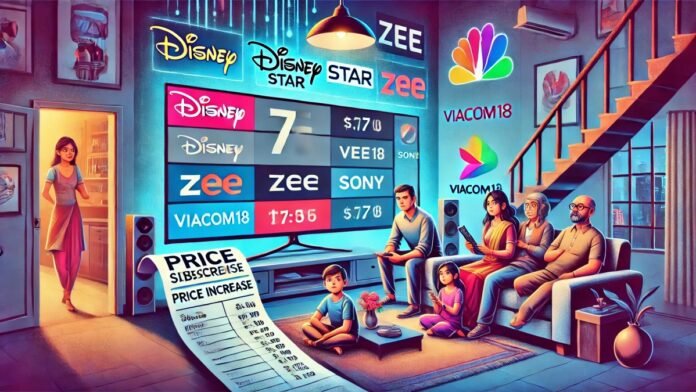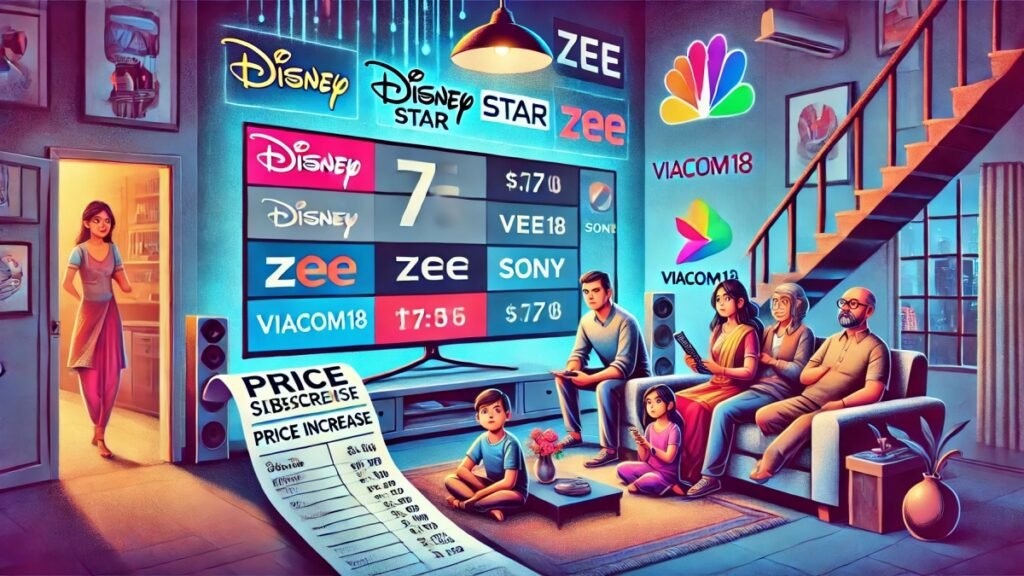
New Delhi: If you’re an avid TV viewer, brace yourself for higher subscription costs starting February 1, 2025. Major television broadcasters, including Disney Star, Viacom18, Zee Entertainment, and Sony Pictures Network India (SPNI), have announced a 5-8% increase in their channel bouquet prices. The move is attributed to growing content production expenses and declining advertising revenues.
A Persistent Trend of Rising Prices
This isn’t the first time TV broadcasters have adjusted their rates. Just last year, in January 2024, the base bouquet rates increased by 10%, with Viacom18 hiking prices by as much as 25%. The demand for Indian cricket broadcasting rights and entertainment content played a significant role in that surge. The upcoming hike in February 2025 reflects ongoing financial pressures in the industry, further burdening viewers.
Why Are Prices Increasing?
Broadcasters cite several reasons for the price hike:
- Rising Content Costs: The cost of producing high-quality shows and acquiring premium content rights has escalated significantly.
- Declining Ad Revenue: With advertisers increasingly shifting their budgets to digital platforms, TV broadcasters are grappling with reduced revenue streams.
- Fewer Paid Subscribers: The number of households subscribing to traditional TV services has been steadily declining, intensifying the need for price adjustments.
How Much Will You Pay?
The price increase will vary across different subscription packs, but here are some examples:
- Sony Happy India Smart Hindi Pack: Previously priced at ₹48, it will now cost ₹54. The updated pack includes a new Hindi movie channel, Sony Max 1.
- Zee Family Pack Hindi SD: Its price will rise from ₹47 to ₹53, now including English entertainment channels like Zee Café.
Digital Platforms and Their Impact
The shift in consumer behavior toward streaming platforms like Netflix, Amazon Prime, and Disney+ Hotstar has forced traditional broadcasters to rethink their pricing strategies. With viewers migrating to digital platforms and advertisers following suit, the financial landscape for TV broadcasters has become increasingly challenging.
What Does This Mean for You?
TV viewers are likely to feel the pinch as subscription costs continue to rise. For those who rely on traditional TV for entertainment, the added expense could lead to a reevaluation of their subscription choices. Meanwhile, broadcasters are betting on loyal viewers who value curated content to sustain their revenue models.

While TV remains a staple in many households, the ongoing shift toward digital platforms suggests that these price hikes may accelerate the trend of cord-cutting, as viewers weigh the cost of traditional subscriptions against streaming services.












































